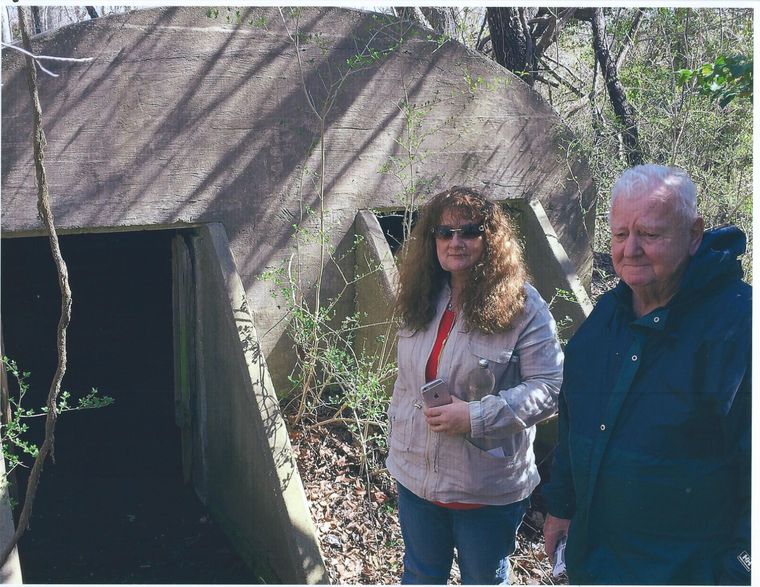Few motorists know that, at the end of the busy Garden State Parkway in New Jersey, they are driving over an area that held the Wissahickon Barracks during World War I. Three Cap May residents, along with help from other locals, searching in the woods for remnants of the barracks, found what they believe was an ammunition bunker as the structure was solid concrete with iron-clad doors.
The trio, Laurie (Boyd) Thomas, Herb Pharo, and Bob Elwell, Sr., all lifelong residents of the Cape May area and amateur archeologists, plan to go back and take specific measurements of the bunker to try to establish the layout of the 100-year-old base. Elwell, a postcard collector, has postcards showing the buildings, parade ground, and some of the activities of the Navy personnel stationed at the barracks, but none showing the ammunition bunker.
Little is known about the bustle of activity in the Cape May area during WWI, although it was equally as busy then as it was during WWII. The local trio had been anxious to document the history of the Wissahickon Barracks so it is not forever lost.
On April 6th, 1917, ten days after the Declaration of War by the United States, Lieutenant Commander F. A. Savage and his aide Ensign Julius Zieget established headquarters in room 137 of the Columbia Hotel in Cape May. They set up a Section Base for the United States Navy at an abandoned amusement pavilion at Sewell’s Point (now the Receiving Center for the United States Coast Guard), which Commander Savage led until April 1, 1918.
The building and launch of the Wissahickon Barracks Training Center were considered an urgent war project, and a total of $1,080,000 was allotted, none of which could be used to buy land. A volunteer selection board pursued three possible donated sites and chose a farm near Cape May owned by Henry Ford and James Cuszens. (Henry Ford had purchased much of this land from Dr. Emlen Physick with the idea of building his Ford automobiles here because of the railroad and Cape May harbor accessibility). This land was leased to the U. S. government for $1.00 per annum.
The Navy department expedited the work on the Wissahickon Barracks buildings, which accommodated approximately 6,000 members of the naval militia as well as members of the Naval Aviation School. The buildings included barracks for the enlisted men, the officers’ quarters, mess halls, a large YMCA building, chapels for religious services, and storage buildings.
There also was a large parade ground and recreation fields. The Cape May sailors at the Wissahickon barracks had a strong football team that represented some of the foremost colleges in the country. Their quarterback, Meadows, who played formerly for the University of Pittsburgh was picked for the All-American team in 1916. Fullback Curran was a Bucknell football star and was also an All-American.
The outfitting of district vessels kept pace with other rapidly expanding activities, and three weeks after the war, had been declared, eight district patrol craft were commissioned. These vessels patrolled harbor entrances to intercept hostile craft and later added minesweeping operations as German submarines were laying mines along the Atlantic coast.
When the war was over…It was to be the war to end all wars, so as result Wissahickon Barracks was torn down. But apparently, not the concrete ammo bunker. This unique find will allow researchers and local people to understand their area’s role in the First World War.
